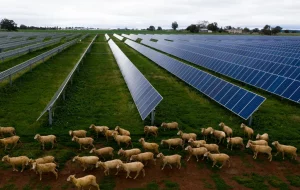Sand eel
Sand eel
Sand eel Sandeels are small eel-like fish which develop as much as 30 cm in duration and might regularly be determined in big shoals. They feed more often than not on plankton of variable size, starting from small plankton eggs as much as large electricity wealthy copepods determined in terrific abundance in Scotland`s seas. Some species of sandeel can stay for so long as 10 years, attaining adulthood at round 2 years of age.
Sandeels have a near affiliation with the sandy substrates into which they bury to guard themselves from predators. Once settled, research have proven that sandeels are primarily resident, hardly ever touring over 20 miles from the regions the decision home. In fact, they hardly ever emerge from the ocean mattress among September and March, besides to spawn.
During spawning sandeels produce a massive batch of sticky eggs which connect to the seabed. The larvae generally tend to hatch more than one weeks later, and then they waft round withinside the currents for up to a few months earlier than settling down into the seabed.
As nicely as being ample in Scottish waters, sandeels are quite nutritious and are consequently the desired prey object for plenty different species of fish, seabirds, seals, whales and dolphins. As they feed on plankton and are eaten through large marine predators, sandeels constitute an essential hyperlink among the decrease and top ranges of the marine meals web.
Sandeels in Scottish seas Sand eel
There are 5 species of sandeel determined round in Scottish seas. The maximum not unusualplace species are Ammodytes marinus, called the Raitt`s sandeel and Ammodytes tobianus, called the lesser sandeel.
The former is normally determined in waters deeper than 20 m at the same time as the later prefers shallow, intertidal waters down to twenty m. The distribution of sandeels inside Scotland`s seas is patchy and is commonly focused on or close by banks and regions of appropriate sediment.
In the beyond sandeels had been commercially essential, centered through business fisheries withinside the North Sea and to a lesser extent, withinside the west of Scotland for his or her oil and use as an animal feed and a fertiliser. Despite being quite controlled the bulk of sandeel shares have skilled extreme declines, idea to had been added approximately through a mixture of overfishing and the consequences of weather change.
Threats to Sandeels Sand eel
Due to their requirement for unique environmental situations sandeels are threatened through a whole lot of special factors. For example, temperature versions could have a massive effect at the metabolic charges of sandeels, which impacts the achievement in their duplicate and might will increase their mortality rate.
The bodily disruption or elimination in their sediment habitat is likewise a selected risk for sandeels, which may be added approximately through improvement upon or close by their sediment habitat and/or sports which disrupt nearby water currents. Very little is thought approximately the restoration of sandeel in reaction to the threats noted above.
The species complicated i.e. all species taken together, isn’t taken into consideration to be in decline, despite the fact that the Raitt`s sandeel is taken into consideration to be threatened through each herbal and human pushed weather change.
at the same time as the lesser sandeel is simplest threated through herbal environmental change. Overall, they’re taken into consideration to be threatened and/or declining in Scottish waters.
Protection
Sandeels also are a blanketed characteristic of 3 MPAs: Mousa to Boddam NC MPA, North-west Orkney NC MPA and Turbot Bank NC MPA. Several MPAs additionally goal to preserve sandeel habitat to make sure the continuing deliver of younger recruits to different sandeel grounds round Scotland and the relaxation of the UK.
By protective the reassets of sandeel in Scottish waters, MPAs might also additionally assist preserve the contemporary standard populace eel2 of sandeels, together with the ones withinside the marine waters of the Forth. Sand eel





